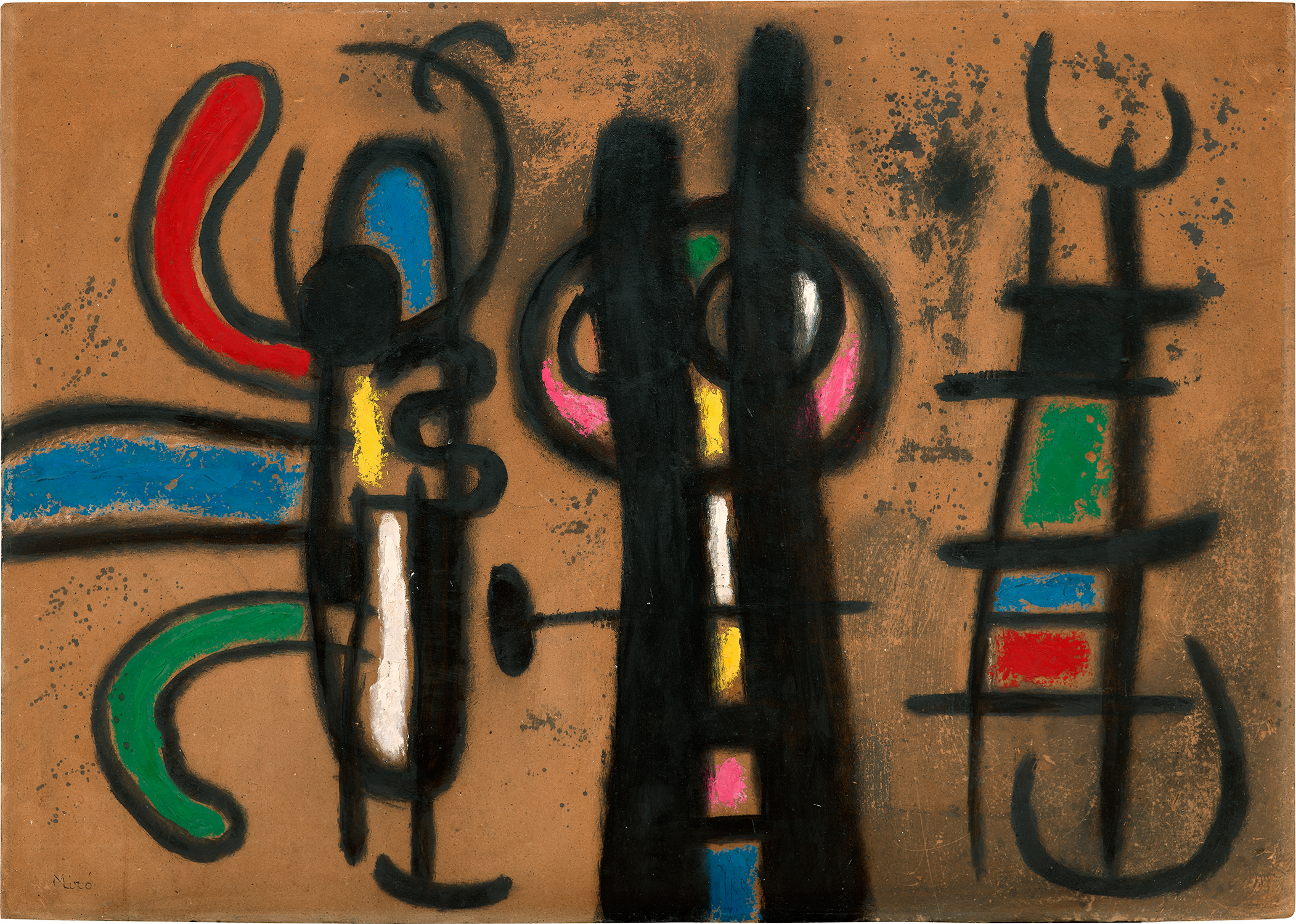

LIVING THE AVANT-GARDE: THE TRITON COLLECTION FOUNDATION
6
Joan Miró
Personnage et oiseaux
signed "Miró" lower left; signed, titled and dated “MIRO. 12/2/63 Personnage et oiseaux” on the reverse
oil on board
29 x 40 7/8 in. (73.7 x 103.8 cm)
Executed on February 12, 1963.